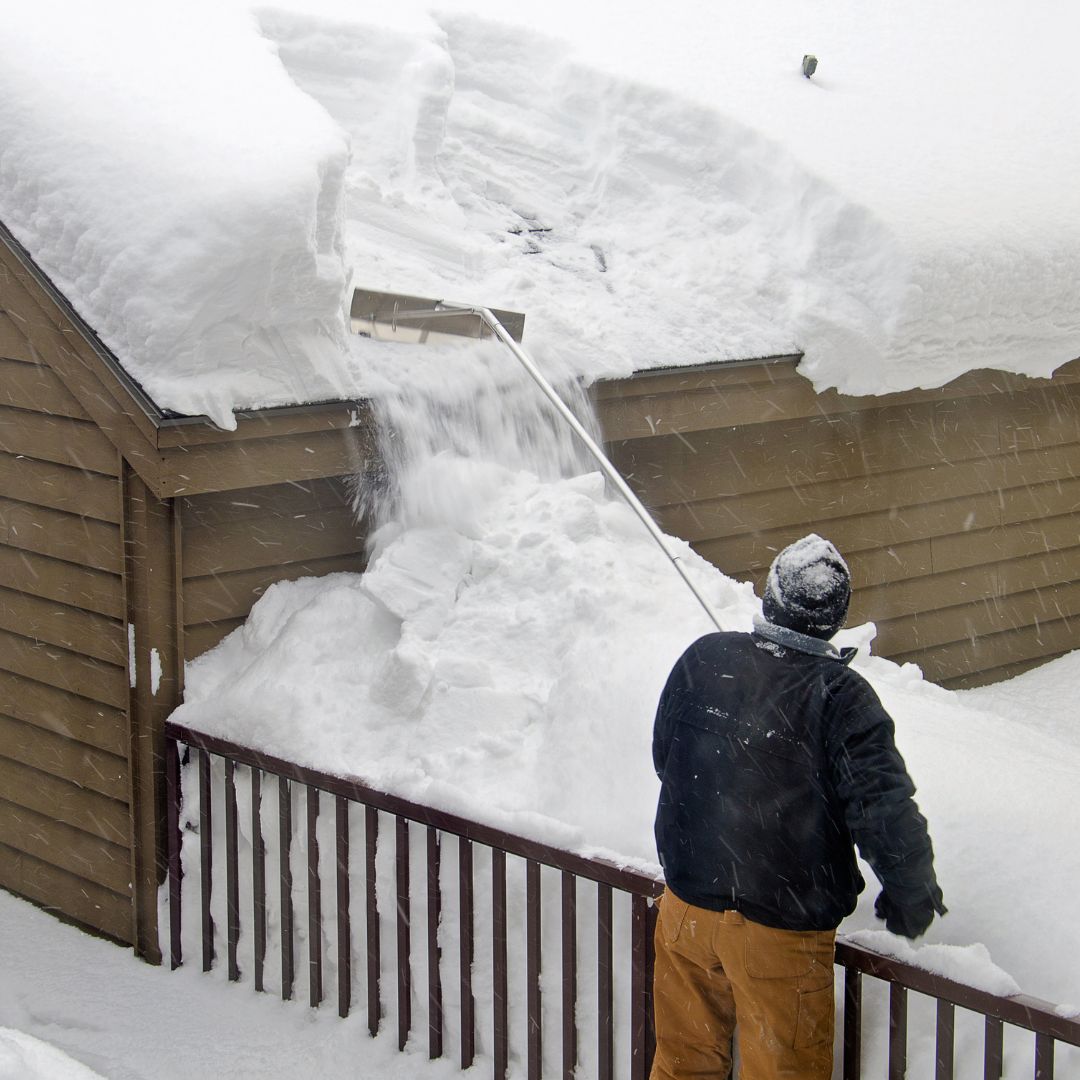
Winter is tough on facility roofs, especially in the northern climates of the United States.
But, as we’ve all witnessed, winter weather can strike just about any place in the country. The snow, wind, ice, and frigid temperatures can quickly turn a minor roofing issue into a big deal.
This article talks about common winter roofing problems facilities face and what to look out for before, during, and after a winter storm hits.
Common Facility Roofing Problems During Winter
Here are some facility roofing issues to keep in mind during the winter months.
Ice Dams
Ice dams form when the bottom layer of snow starts melting on a warmer section of your roof. As the melted snow heads to the downspout, it’s met with cold air along the roof's edge. It quickly refreezes, causing an ice dam.
Ice dams can lift the roofing and damage the underlayment. The separation could allow water into the building. It also creates an open space for critters seeking refuge from the cold.
Uneven temperatures near the roof cause this winter roofing issue. Depending on the type of facility experiencing the problem, ice dams can be hard to control.
Icicles
Those icicles may look pretty and impressive. Their size and height, however, can make them pretty dangerous.
If someone is in the wrong place at the wrong time when an icicle comes down, it could lead to a serious injury.
The larger icicles could cause your gutters to pull away and damage the roof.
Use a snow rake or other equipment to knock down the icicles. If that’s not possible, section off an area where the icicles may fall and put up warning signage to maintain safer conditions.
Damaged Flashing
Flashing keeps moisture out of the vulnerable parts of your roof. The harsh weather can push older and weak flashing past its limits. When the flashing gets worn or damaged, those vulnerable parts are exposed to the elements.
Tree Damage
Your team has cared for the trees at your assets all year long. But Mother Nature can do some pretty nasty things in the wintertime.
Frozen rain and heavy winds may bring a branch down your roof, causing all sorts of damage.
Leaks from Snow Buildup
A big snowstorm can drop lots of heavy snow on the roofs of your facilities. The added weight shouldn’t be a major issue if your building is structurally sound.
But the extra weight could create issues at weak spots or areas that sustained damage from wind, tree limbs, or ice dams.
More notably, accumulated snow slows water drainage from the roof’s surface. As the snow begins to melt, the water doesn’t drain as quickly as in other seasons. The slow drainage, especially when gutters and downspouts are clogged, causes water to go into the lowest spot possible--including through damaged areas of the roof.
Preventing Winter Roofing Damage

Here are some ways you can help protect the health of your facility’s roof this winter.
Get A Professional Inspection Before Bad Weather
Winter weather can make roofing issues worse. Know the condition of each facilities’ roof before the season starts. Commercial roofing contractors can help you determine whether repairs or replacements are necessary. They could spot potential or hidden issues that would be nearly impossible to spot from the ground.
Roof inspections also help determine the remaining lifespan of the roof, so your agency can budget for replacement costs.
Keep records of inspections so you and your team could be aware of any potential problems to check for as the winter months drag on.
Regularly Inspect for Signs of Damage or Dangerous Conditions
Schedule inspections of areas in the facility that winter conditions might impact. For example:
- Check inside for any signs of leaks or water damage, especially near vulnerable areas of the roof.
- Make sure entrances and walkways are clear from icicles.
- Spot-check the roof for any flashing damage or fallen tree limbs.
- Note areas where ice dams occur and document them for further reference.
- Document areas of the roof that seem to give off more heat.
Make Sure Gutters & Downspouts are Clear
Clogged gutters keep water from draining from your roof. Add that to the slowed drainage of melting snow. You’re practically inviting water into your facility!
Once the leaves have fallen from the trees, make sure they didn’t all land in the facility’s gutters. Or that they are clogging the opening to the downspouts.
Improve Attic Insulation and Ventilation
Uneven heat distribution near the roof causes ice dams and icicles to form. Proper insulation can help some facilities keep their attics closer to the outdoor air temperature while ensuring heat stays in the used portions of the buildings.
Also, proper ventilation helps reduce any condensation caused by interior heat meeting colder air near the roof. This condensation causes moisture that can lead to mold, mildew, and water damage.
Trim Trees When Appropriate
Dead branches or branches hanging over a roof should be removed to prevent damage if they break off during a winter storm.
Manage Issues That You Can
Going on a roof in winter conditions is best left to professionals with the appropriate safety equipment.
A snow rake can help remove snow at the roof edges from ground level. It can also help prevent icicles and ice dams. Use it carefully to avoid damage to roof shingles or gutters.
If snow is excessive, and you’re worried it will damage your roof, set up an emergency snow removal plan ahead of time with professionals that understand how to do this safely.
In Conclusion
We can’t control what winter throws our way. We can, however, take measures to prevent serious damage to the roofs of our facilities.
Conduct regular inspections and maintenance before the winter weather hits. Then, during and after a snowstorm, spend a bit extra time inspecting vulnerable areas of the roof.
